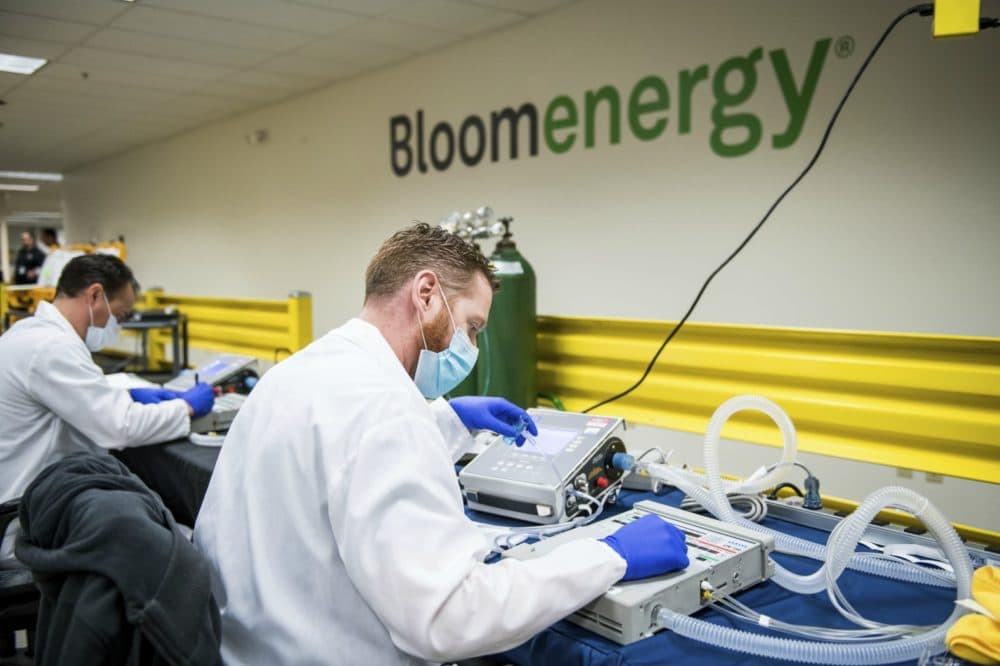Advertisement
commentary
How To Ration Ventilators: There's A System, But It's Still Agonizing

Many hospitals across the country, and the world, have or will soon have more patients who need breathing support than they have ventilators. Physicians will have to decide who gets a ventilator, and who doesn’t. Doctors in Italy have already struggled through these harrowing choices.
We’re better at rationing than we used to be — but it never will, and never should, be easy.
Some ethical dilemmas are as old as medicine itself. Others have emerged, or grown urgent, at specific times, in response to disasters and innovations. Rationing has always existed in some form: A clinician’s time is limited even in the best of situations, and mass casualty emergencies necessitating a version of triage must have happened even to cavemen.
A shift happened in medicine, though, starting in the 1950s: Clinicians developed new technologies. In the early stages of a new intervention, not everyone who needs it can get it. This happened with the first dialysis machines in 1960s Seattle.
Clinicians had a limited number of dialysis machines and a long list of patients who needed dialysis to stay alive. So they convened an anonymous group of regular people, to decide, like a medical ethics jury of peers.
Physicians will have to decide who gets a ventilator, and who doesn’t.
These questions were new. The jurors fumbled and argued. They did the best they could, but biases crept in. Their deliberations strike notes dissonant to our modern ears: “For the children’s sake, we’ve got to reckon with the surviving parent’s opportunity to remarry, and a woman with three children has a better chance to find a new husband than a very young widow with six children.”
Bioethicists have learned from that first attempt. We now use systems, based on principles, to make rationing decisions.
Take, for example, the issue of limited access to newly developed drugs. Often, these drugs are developed to treat rare and fatal conditions with no existing cure. A new drug is a light for the moth of hope, even if there isn’t yet research demonstrating its efficacy. So patients ask drug companies for early access to medications. Left unmodulated, those circumstances lead to a situation where only the people with the most time and savvy to lobby drug companies, including with social media, get the drug. In 2015, Johnson & Johnson worked with New York University’s bioethicists and convened a committee to help make those decisions.
The committee established a set of principles articulating the shape and limits of a system for deciding who would receive the drug, and who wouldn’t. The principles didn’t make choices easy. Art Caplan, the bioethicist who headed the effort, wrote in a co-authored paper, “These principles and their relative weightings could serve only as macrolevel guides for individual cases; they could not produce anything close to automatic decisions.” But those “macrolevel guides” helped.
The patient with the lowest score gets the ventilator.
This process illustrated a broader truth about the way we make moral decisions. Because humans have inherent biases, and because we’re often blind to those biases, we tend to make decisions that hold up better in hindsight when we use systems, rather than making moment-to-moment decisions.
Our court system demonstrates this benefit: Judges use codified laws, and precedents in interpreting those laws, to adjudicate each case. Those systems help guard against the natural human tendency to let our biases, conscious and unconscious, steer our decisions.
We have systems for rationing ventilators during COVID-19, too.
Bioethicist Zeke Emanuel co-wrote on this topic in the New York Times, and offered a series of suggestions for rationing, including that “the goal of maximizing benefits and survival for the many should take priority over the goal of treating the patient who happened to get sick and come to the hospital first.”
This is a principlist stance, that one aim — maximizing the well-being of the many — ought to guide all rationing decisions in caring for coronavirus patients. Emanuel traces some specific actions that follow from that principle: Priority should go to health-care workers and other emergency responders, and clinicians should focus on caring for patients likelier to recover, rather than putting maximal resources into the care of patients medically unlikely to survive. New guidance from Massachusetts health officials, released Tuesday, codifies that system with suggested guidelines for hospitals here.
Systematized doesn't mean simple or easy. Massachusetts health officials and ethicists based their guidelines on those developed in other states, but their counterparts across state lines differ. Take the directive to prioritize health-care workers who can provide patient care: New York's state guidelines do not include that provision, nor do the guidelines developed by Partners HealthCare, which runs two of Boston's largest teaching hospitals.
The physical realities of providing ventilator support to patients also complicate the application of what sounds, in the abstract, like a clear set of rules. This guidance directs triage officers to give each patient a "score" indicating their likelihood of benefiting from a ventilator based on their medical history and prognosis. The patient with the lowest score gets the ventilator.
But in some situations, this could require extubating one patient from a ventilator so another patient can use it. Triage scores are living numbers, and they change with a patient's health. That elasticity is required — without it, the numbers couldn't accurately reflect patients' shifting medical status — but the act of reassessing an already-made decision can cause significant emotional distress for clinicians. These living numbers are also dying numbers.
With that said, if we look beyond the givens of our situation today — beyond the necessarily narrow focus of triage guidelines — clinicians shouldn’t have to ration ventilators as much as they may need to. We should have more machines. Donated organ shortages are not elastic, but finite, at least for the moment: We can’t make more. That’s not true of ventilator shortages. We can get, and make, more — and we are. But we should have had them already.
